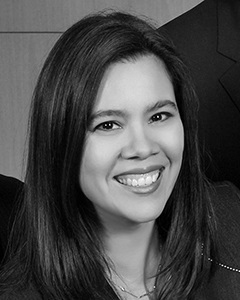In this issue, we talked to Dr. Marlís Gonzalez-Fernandez at Johns Hopkins School of Medicine in Baltimore, MD. During the initial outbreak, Dr. Gonzalez-Fernandez worked with her team to transition technologically and physically to meet patient need. She followed the data and trends and has worked on connecting the dots between the long-term impact of COVID-19, our envisioned BOLD future and the place physiatry has across the care continuum. The following article is based on her experience as of mid-2020.
 Marlís Gonzalez-Fernandez, MD, PhD, FAAPMR
Marlís Gonzalez-Fernandez, MD, PhD, FAAPMR
Associate Professor of PM&R and Orthopaedic Surgery; Vice Chair Clinical Affairs, Dept. of PM&R
Johns Hopkins University School of Medicine
My colleague, Dr. Pablo Celnik, previously shared his insights as to PM&R across the care continuum and how Johns Hopkins mobilized in the face of the initial stage of the pandemic. I am honored to have been part of the team that helped make the many transitions at the beginning of the pandemic happen.
In the time since his interview, our paper "Managing the Rehabilitation Wave: Rehabilitation Services for COVID-19 Survivors" was published, providing one perspective on the place of physiatry in this "new normal." In short, when everyone was hit, places were focused (rightfully) on keeping people alive, especially as cases surged in certain geographic areas. Looming over all of us was the imminent "rehab wave," or what people would be facing post-COVID. The more we have learned about this virus, the more we have seen that people have issues requiring rehabilitation — requiring physiatrists. With the development of COVID variants and the steady rise of Long COVID, we must look back at the beginning of the pandemic to leverage all that we have learned. One thing that I can say for sure is that physiatrists will be busier as we move forward.
What stood out to me during the pandemic is the ever-growing importance of PM&R early in the care continuum. There's a lot of coordination of care, a lot of case reviews and a lot of team-type activities that are not directly reimbursable, but that are incredibly necessary for people to get the care they need and for us to be able to determine who needs care. That was challenging before COVID, during COVID and, I predict, will be long after COVID.
The pandemic has highlighted the fact that we need strong collaborations with other specialists in the hospital to demonstrate the value of our work. Colleagues in other specialties can be strong advocates for early rehabilitation. This will be important as healthcare models change; the rehabilitation needs of our patients need to be considered early and often. The challenge is that, when people think of novel ways to provide medical care, post-acute care is often an after-thought. If we are at the table, we can make sure that rehabilitation needs are considered throughout the care continuum.
The pandemic also highlighted the places where early rehabilitation can make an impact. There are relatively straightforward interventions that physiatrists can help implement to provide better care overall. For example, for select COVID patients bringing rehabilitation interventions earlier in the course resulted in earlier discharge. For others, CIR level of care could be brought to the COVID floors to reduce total length of stay and prevent infection of other patients in the rehabilitation units.
How does this impact us now that we're in a "COVID-era?" The pandemic has shown the value of physiatrists across the care continuum and made other specialties more aware of the influence and need for rehabilitation professionals early in the course of care. The conversations that used to happen without our input are now including us, which is a big "win" as we try to get back to some semblance of normal.